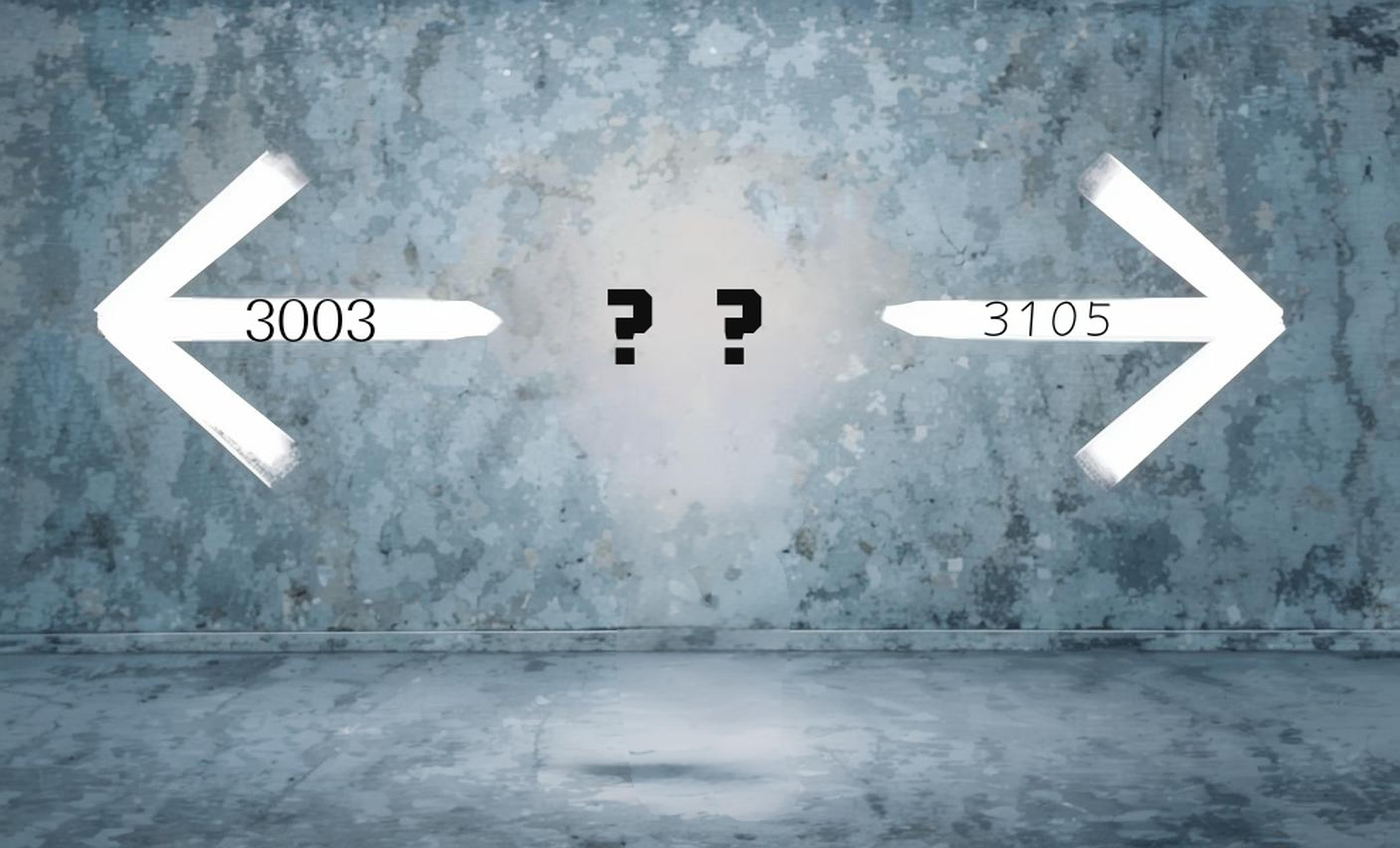
As is widely known, many buyers, when choosing AA3105 alloy as the base material for color-coated products, are often told by suppliers that to save costs, they can opt for AA3003 instead, as the price is considerably cheaper. The basic properties of these two alloys are similar. Whether driven by the buyer’s concerns or the supplier’s good intentions, this reflects the support and service provided during the collaboration between both parties. To help facilitate the decision-making process and make it easier for people to differentiate between the two alloys, we will first provide a detailed introduction to the composition of both AA3003 and AA3105 alloys.
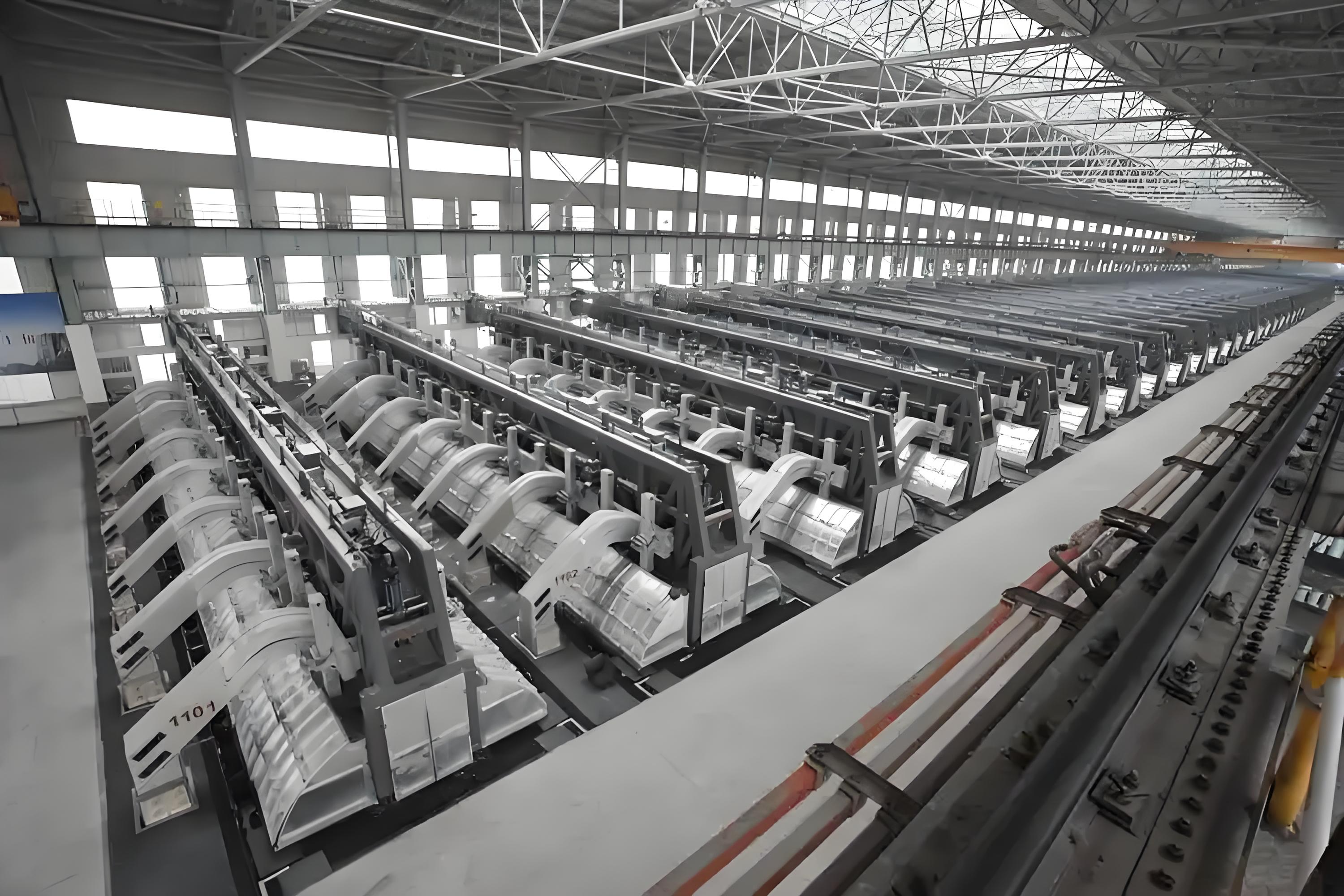
Description of AA3003 Alloy:
1. Chemical Composition
Main Alloying Elements:
Manganese (Mn): 1.0%-1.5%
Silicon (Si): 0.6%-0.9%
Copper (Cu): 0.05%-0.2%
Iron (Fe): 0.7% max
Aluminum (Al): Balance
Other Elements: This alloy may also contain trace amounts of magnesium, chromium, zinc, and other elements to enhance its performance.
2. Mechanical Properties
Tensile Strength: Approximately 110-150 MPa
Yield Strength: Approximately 50-110 MPa
Elongation: Typically greater than 20%, indicating good formability and ductility.
Hardness (Brinell): Approximately 35-45 HB.
Density: 2.73 g/cm³.
3. Physical Properties
Thermal Conductivity: Good thermal conductivity, making it suitable for applications such as heat exchangers and condensers where heat dissipation is essential.
Electrical Conductivity: As an aluminum alloy, AA3003 has good electrical conductivity, making it ideal for electrical and electronic components.
Corrosion Resistance: AA3003 offers excellent corrosion resistance, especially in moist or harsh environments, and is widely used in exterior decoration and applications that require resistance to oxidation.
4. Surface Treatment
Coating: AA3003 is often used in the production of coated aluminum coils, where surface coatings further enhance its corrosion resistance and aesthetics.
Anodizing: Due to its surface suitability, AA3003 can undergo anodizing treatments to form a protective and decorative oxide film.
5. Workability
Weldability: AA3003 has excellent weldability, particularly in MIG and TIG welding processes. Its weldability is superior to many other aluminum alloys, making it very popular in manufacturing processes.
Machinability: The alloy also has excellent machinability and can be easily cold-rolled, extruded, stamped, and formed into various shapes, making it ideal for complex part fabrication.
6. Applications
Due to its excellent corrosion resistance and machinability, AA3003 is widely used in several industries, including:
Building Industry: Used for exterior wall decorations, roofing materials, ceilings, curtain walls, and other architectural elements.
Appliance Manufacturing: Used for refrigerator, air conditioner, microwave, and other appliance housings.
Chemical Equipment: Such as condensers, heat exchangers, and other parts where resistance to corrosion is required.
Automotive Industry: Some lightweight automotive parts and decorative materials.
Transportation: Components for ships, aircraft, and railway vehicles.
Packaging Materials: Used in aluminum foil and aluminum caps, particularly for food and pharmaceutical packaging.
7. Advantages
Excellent Corrosion Resistance: AA3003 is a typical aluminum-manganese alloy with outstanding corrosion resistance, especially suited for environments exposed to moisture, seawater, or chemicals.
Good Formability: With lower strength and good ductility, AA3003 is easy to form and process, making it suitable for a wide range of complex shapes.
Cost-Effective: Its relatively low production cost makes it an ideal choice for many industries, especially in applications requiring good performance but with budget constraints.
8. Limitations
Lower Strength: Compared to other aluminum alloys (such as AA6061, AA7075), AA3003 has lower strength, so it may not be suitable for applications requiring high strength.
Lower High-Temperature Performance: AA3003 does not perform as well at high temperatures as some other aluminum alloys (such as AA6061), and it may lose some of its mechanical properties under high-temperature conditions.
9. Heat Treatment
AA3003 is a non-heat-treatable alloy, meaning it does not undergo significant strengthening through heat treatment (such as aging). Strengthening is typically achieved by cold working the alloy.
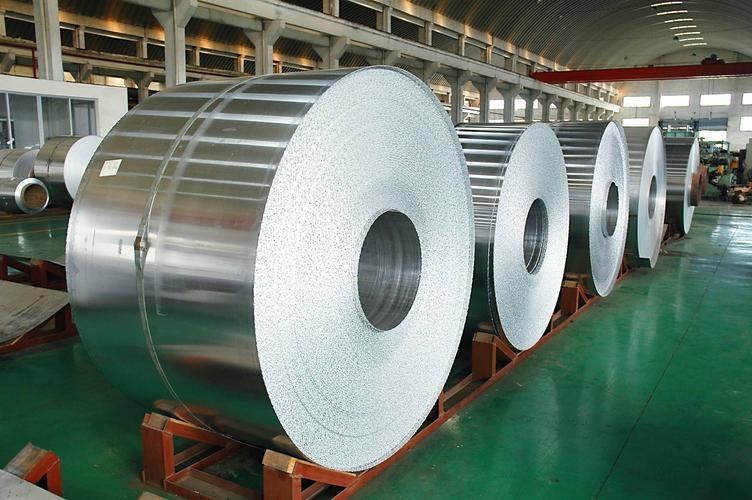
Description of AA3105 Alloy:
1. Chemical Composition
Main Alloying Elements:
Manganese (Mn): 1.0%-1.5%
Silicon (Si): 0.6%-1.0%
Copper (Cu): 0.05%-0.2%
Iron (Fe): 0.7% max
Aluminum (Al): Balance
Other Elements: Trace amounts of magnesium, zinc, nickel, and other elements may be present, helping to improve the alloy’s corrosion resistance and oxidation resistance.
2. Mechanical Properties
Tensile Strength: Approximately 170-250 MPa
Yield Strength: Approximately 90-180 MPa
Elongation: Typically greater than 20%, indicating good workability and ductility.
Hardness (Brinell): Approximately 40-60 HB.
Density: 2.73 g/cm³.
3. Physical Properties
Thermal Conductivity: AA3105 alloy has good thermal conductivity, making it suitable for applications such as heat exchangers and condensers that require efficient heat dissipation.
Electrical Conductivity: As with other aluminum alloys, AA3105 has good electrical conductivity, which makes it ideal for use in electrical and electronic components.
Corrosion Resistance: AA3105 offers excellent corrosion resistance, especially in humid or marine environments. Its higher manganese content provides it with strong oxidation resistance and durability in corrosive environments.
4. Surface Treatment
Coating: AA3105 is commonly used in the production of coated aluminum coils, where surface coatings such as paints or sprays are applied to improve corrosion resistance and enhance appearance.
Anodizing: AA3105 can undergo anodizing treatment to form a hard protective oxide layer, enhancing both its corrosion resistance and aesthetic appeal.
5. Workability
Weldability: AA3105 has excellent weldability, particularly suitable for MIG (Metal Inert Gas) and TIG (Tungsten Inert Gas) welding processes. Its welding properties are better than many other aluminum alloys, making it suitable for the production of structural parts.
Machinability: AA3105 has good machinability and can be cold-rolled, extruded, stamped, and bent into various shapes, making it ideal for manufacturing complex parts.
6. Applications
AA3105 alloy is widely used across multiple industries that require high corrosion resistance and good mechanical properties, including:
Construction Industry: Used for exterior cladding, roofing, and decorative materials, especially in marine or high-humidity environments.
Appliance Manufacturing: Used for making housings for appliances such as air conditioners, refrigerators, and microwave ovens.
Automotive Industry: Used in automotive exterior components, decorative parts, and structural parts.
Packaging Materials: Used for aluminum foil, aluminum bottle caps, and other packaging materials, especially in food and pharmaceutical packaging.
Transportation: Applied in transport equipment such as ships and certain vehicle exterior structures.
7. Advantages
Increased Strength: Compared to AA3003 and AA3005, AA3105 offers higher strength, making it more suitable for applications requiring a moderate level of strength.
Excellent Corrosion Resistance: AA3105 is highly resistant to corrosion, especially in humid or marine environments. Its high manganese content provides it with superior oxidation resistance, making it ideal for harsh conditions.
Good Workability and Weldability: The alloy offers excellent machinability and can be processed through a variety of methods. Its good weldability makes it suitable for the production of structural parts.
Wide Range of Applications: AA3105 alloy is widely used across various industries, particularly in construction, home appliances, packaging, and transportation, where both corrosion resistance and mechanical performance are important.
8. Limitations
Limited High-Temperature Performance: Compared to other aluminum alloys such as AA6061, AA3105 has relatively poor high-temperature performance, and it is not suitable for high-temperature environments.
Strength Limitations: While AA3105 has higher strength than AA3003 and AA3005, it still does not match the strength of higher-strength aluminum alloys like AA7075 or AA6061.
9. Heat Treatment
AA3105 is a non-heat-treatable alloy, meaning it does not undergo significant strengthening through heat treatment (such as aging). The strength of this alloy is primarily increased through cold working.
Summary:AA3105 Alloy is a high-strength, corrosion-resistant, and easily workable aluminum alloy. It is particularly suitable for applications in industries such as construction, home appliances, automotive, packaging, and transportation, where both corrosion resistance and mechanical properties are required. While its high-temperature performance and strength are lower compared to some other aluminum alloys (such as AA6061 and AA7075), it remains an excellent material for applications in humid or marine environments. Its combination of strength, durability, and ease of processing makes it a popular choice for a wide range of industrial applications.
Specific differenceslight the between AA3003 and AA3105
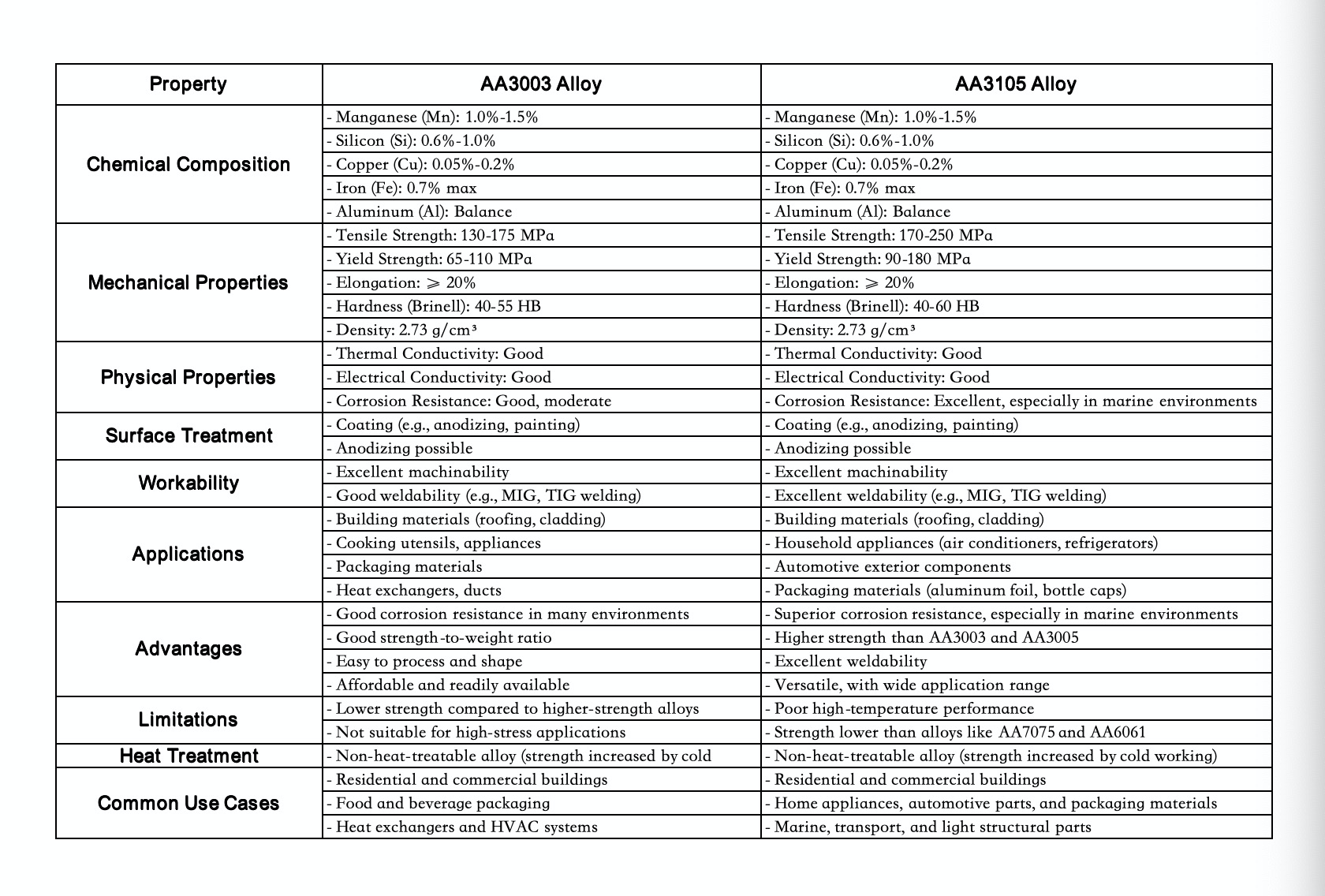
To simplify the decision-making process for downstream buyers, it’s essential to focus on the key physical properties of aluminum alloys—tensile strength, yield strength, and elongation. By clearly understanding these parameters, buyers can easily choose the most suitable or cost-effective alloy for their specific applications.
Buying guide :
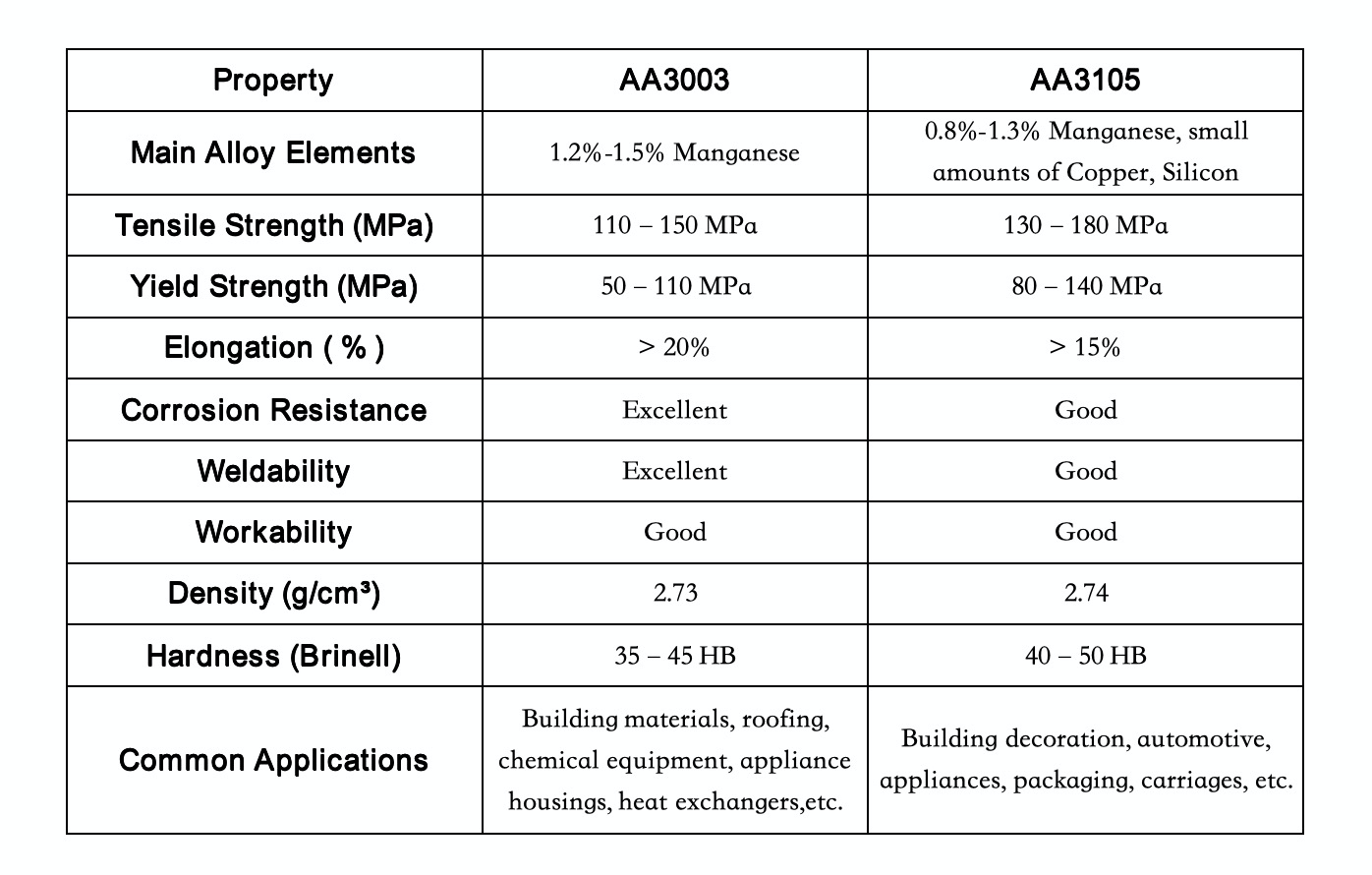
How these different states affect the alloys:
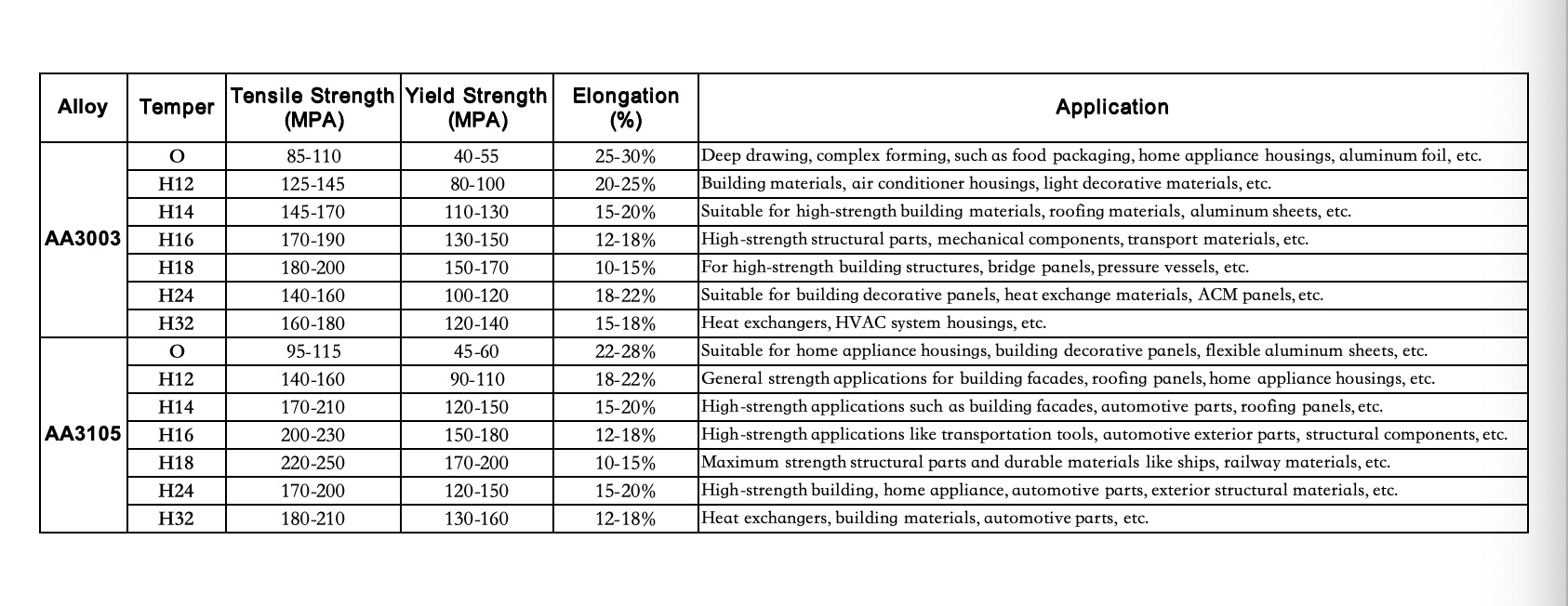
From the analysis above, it can be seen that for AA3003 alloy, when good formability and low strength are required, the O state (fully annealed) should be chosen. For general strength requirements in building materials and appliance housings, H12, H14, or similar cold-worked states would be suitable. If higher strength is needed (such as for pressure vessels or bridge panels), H16 or H18 states are more appropriat.
For understanding of the base material, the selection process becomes much simpler. For products that require a longer service life or will be used in harsh coastal conditions, it is recommended to select a high-strength alloy and apply a high-performance surface coating such as fluorocarbon paint for better weather resistance. In some high-standard or stricter use scenarios, it may even be necessary to apply multiple coatings on high-strength alloys.
Based on the analysis of these two alloys and their physical properties, I believe this will provide clearer direction for your material selection. If you have any concerns or would like to discuss specific processing products, please leave us a message or contact us online. Your concerns are our driving force for continuous improvement.
English
العربية
Français
Русский
Español
Português
Deutsch
italiano
日本語
한국어
Nederlands
Tiếng Việt
ไทย
Polski
Türkçe
ភាសាខ្មែរ
Bahasa Melayu
Filipino
Bahasa Indonesia
magyar
Română
Čeština
Монгол
हिन्दी
فارسی
Slovenčina
Slovenščina
Norsk
Svenska
Ελληνικά
Suomi
Latine
Dansk
Shqip
Hrvatski
Afrikaans
Gaeilge
Eesti keel
latviešu
Azərbaycan dili
Беларуская мова
ქართული
íslenska
Kinyarwanda
Lietuvių
Lëtzebuergesch
Македонски
Malti
Türkmençe
ئۇيغۇرچە
Cymraeg
















